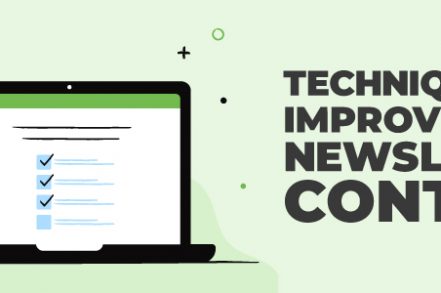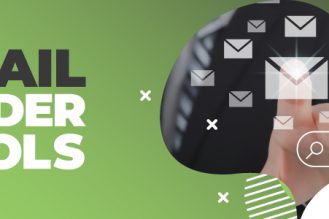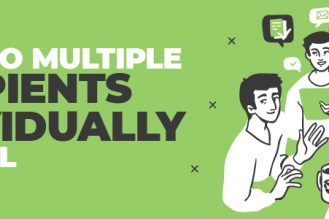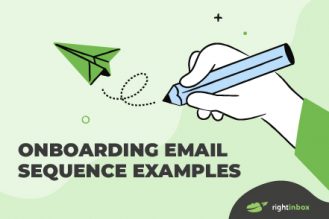Has your newsletter content strategy turned stale? Newsletter campaigns can be an excellent marketing method if done correctly. You can expect higher engagement rates, a strong ROI, and greater customer loyalty.
However, without carefully thought-out plans with effective techniques, these positive results may suffer. With that in mind, we’ve created this article to help you maximize your newsletter content strategy.
Why Should You Strive to Improve Your Newsletter Content Strategy?
Free to use image sourced from Pixabay
Pretty much every marketing campaign can be improved in one way or another. Your newsletter content strategy is no exception. Here are four reasons why you should always strive for improvement:
- Regular source of traffic: One of the most significant advantages of sending regular newsletter emails is the potential to drive traffic to your website. Adding links and CTAs makes it easy for sign-ups to go directly to what they need on your website. They might also learn of products, services, or solutions they didn’t know you offered.
- Cost-effective marketing: Newsletter marketing is cost-effective compared to other marketing methods, such as PPC or influencer marketing. In fact, Litmus claims email marketing delivers an impressive $36 ROI per $1 spent. On the other hand, PPC offers a $2 ROI for every $1 spent, according to WordStream.
- Keep customers informed and engaged: Newsletters are great for informing customers of industry or company news, as well as driving engagement. Got an upcoming update on your PBX virtual VoIP software? Create a newsletter detailing what it’s all about. Discovered a new and unique insight that’ll help customers solve a problem? Share this in one of your newsletters.
- Measurable results: Being able to measure results is essential for email marketing campaigns, newsletters or otherwise. Email marketing software often provides data such as open rates and click-through rates, so you can measure engagement. This data will help you learn whether your campaigns are successful and profitable. They’ll also help you improve your strategies for better results next time.
How to Improve Your Newsletter content Strategy
1. Know the Essential Components
Although a newsletter can contain many components, we’ve identified four essential ones:
- Enticing subject line: According to SuperOffice, the average email open rate in 2022 was 16.97%. This is down from 21.3% in 2021, as the table below indicates. A possible reason for this decline could be that people are suffering from email overload. Therefore, you need to ensure your newsletter stands out with an enticing subject line – one of the deciding factors for opening an email.
- Informative content: Your newsletters need to contain informative content for people to continue to open your emails. This will not only help your customers know what to expect when they open your newsletters, but it also enables you to develop authority in your niche. You might, for example, have a .ai website that offers subscription-based AI software. Newsletters can be a way of communicating your AI expertise to your customers.
- Visuals: Use visuals to make your newsletter more appealing, easy to read, and break up the text. Furthermore, visuals provide an element of branding. Develop a style of visuals that’s specific to your brand and use it across your channels. This will reinforce your brand image and make you more recognizable across the board.
- CTA: You need to tell your readers what you want them to do at the end of your newsletter with a strong CTA. This should be short and snappy, and direct your reader to a specific page on your website.
2. Personalize Your Content
Personalization doesn’t just mean adding your reader’s name to your newsletter (although that is good practice). It’s also about tailoring content to people with different needs, interests, and goals. Segment your audience using a segmentation tool, then decide on a goal, topic, and data collection method for each segment.
For example, you might write a separate newsletter for Millenials and Gen Z. But, set the same goal and data collection method for both. Alternatively, you might segment your audience by whether or not they’ve made a purchase, what type of items they bought from you, or whether they are new sign-ups or long-standing readers.
This personalization also has to apply to landing pages, as once people click through from email newsletters, they might be disappointed if they’re faced with something generic. Working with a website personalization specialist to set this up is a savvy step.
3. Add Value With Relevant Topics
Free to use image sourced from Pixabay
If newsletter readers deem you to be annoying, irrelevant, or just plain boring, they’ll either not open your emails or unsubscribe from your mailing list. These will have you wasting money or losing contact with potential customers. Therefore, you need to ensure that opening and reading your emails is worth their time.
But how do you do this? Adding value is the key here. Here are some ways you can achieve this:
- Teach a new skill or direct the reader to a blog post that does so.
- Talk about the benefits of a specific feature you offer, such as using a toll free phone line for businesses.
- Answer a FAQ that will help your readers.
- Give them a chance to contribute with polls, competitions, or ideas.
- Be funny and entertaining.
- Use relevant anecdotes and short stories to illustrate your points.
When you’re developing newsletter content, it’s always important to ask yourself what your audience gets out of it.
You can search industry trends on Google, Facebook, and Twitter, to come up with fresh content ideas to write a blog post. You can also look at what your competitors are blogging about for further inspiration.
4. Inform Rather Than Promote
Newsletters are a way to pique your sign-ups’ interests and make them keen to learn more. To do this, you can direct readers to a relevant blog post or web page. Alternatively, you might, for example, direct them to a product. However, the important thing with newsletters is to stay away from the hard sell.
It’s OK to tie in your products or services to the theme of the newsletter. However, sales should not be the primary focus. Rather, educating customers, entertaining them, or solving their problems should be the priority. Newsletters are there to inform, not promote.There are plenty more email marketing opportunities for outbound sales.
Key Takeaways
Newsletter content strategies can be tricky to get right, particularly since more people are leaving emails unopened. Building a steady, loyal, and regular audience might take time, but the advantages make it well worth the effort.
Follow the techniques in this article to optimize your newsletter campaigns. Understand what makes a good newsletter, ensure it’s personal, add value to your content, and resist the urge to promote.
Track emails, email reminders & templates in Gmail for free
Upgrade Gmail with the features it’s missing
Add to GmailDavid Campbell
David Campbell is the editor of the Right Inbox blog. He is passionate about email productivity and getting more done in less time.




